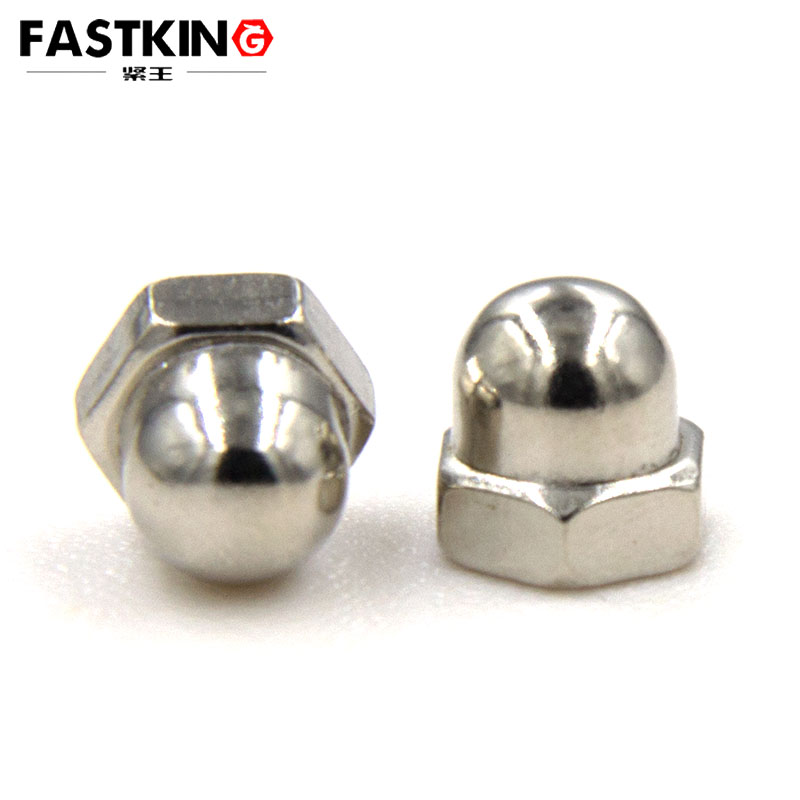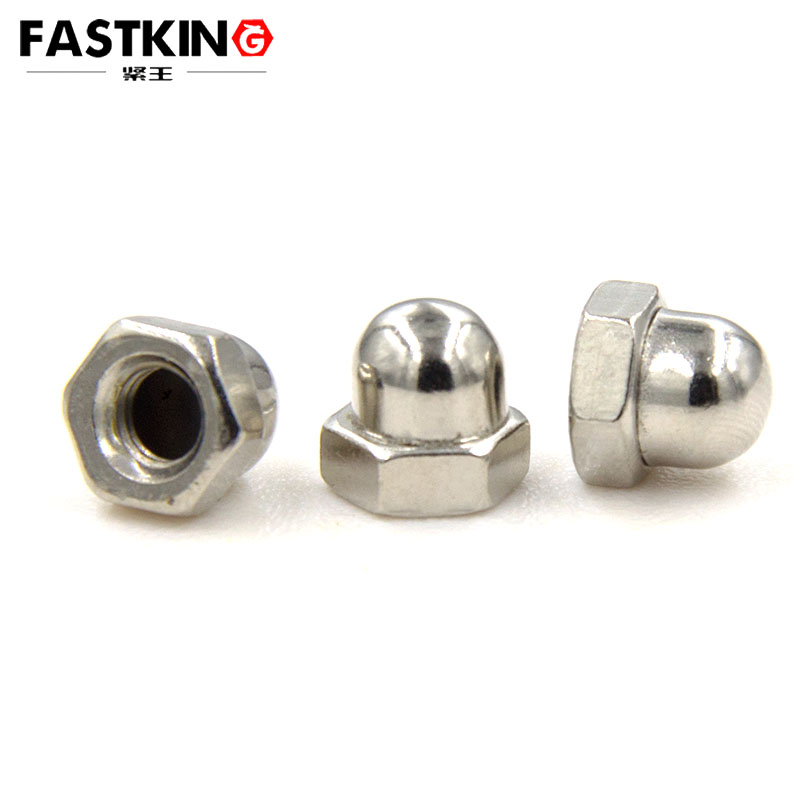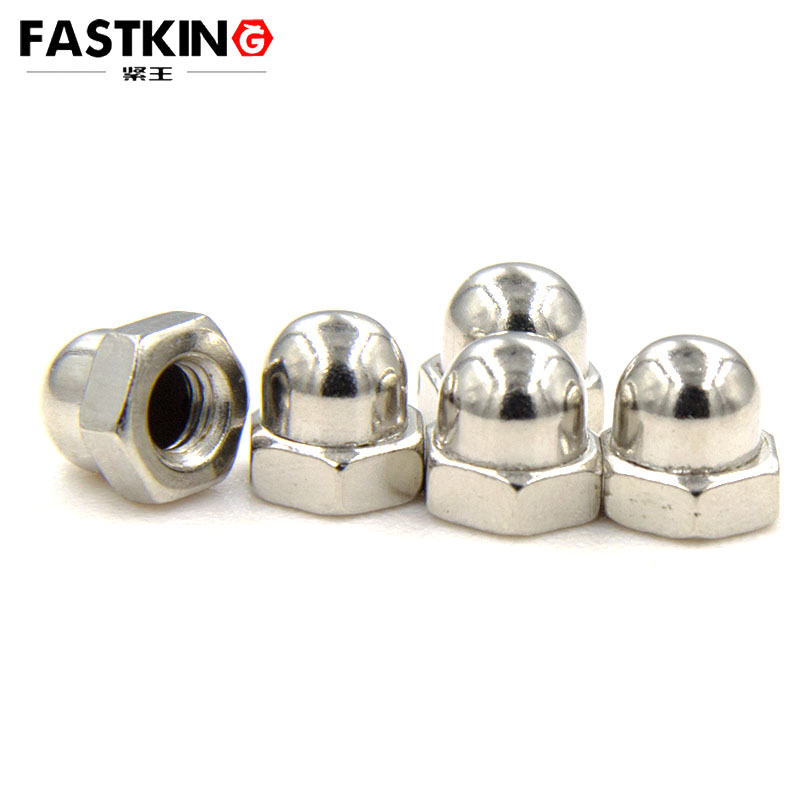Abstract
This paper explores the structural characteristics, working principles, and extensive industrial applications of combined cap nuts. By analyzing their unique anti-loosening and sealing properties, the importance of these fasteners in mechanical assembly is highlighted. Research findings indicate that combined cap nuts exhibit significant advantages in vibration-prone environments, corrosive conditions, and applications requiring high aesthetic standards, providing reliable solutions for engineering design and equipment maintenance.
Keywords
Combined cap nuts; Anti-loosening design; Sealing performance; Mechanical fastening; Industrial applications
Introduction
Combined cap nuts, as a special type of fastener, play a crucial role in modern mechanical assembly. With advancements in industrial technology and increasing performance demands, traditional nuts often fail to meet engineering requirements in certain scenarios. Combined cap nuts integrate the fastening function of standard nuts with the protective features of cap nuts, addressing loosening issues in vibrating environments and sealing needs in corrosive conditions through their unique design. This paper systematically analyzes the working principles, performance characteristics, and application scenarios of combined cap nuts, providing a reference for engineers in selection and usage.
1. Structural Characteristics of Combined Cap Nuts
A combined cap nut is a fastener that combines a standard hexagonal nut with a hemispherical or cylindrical cap. Its basic structure consists of a lower threaded section and an upper cap section, typically designed as an integrated unit or a detachable assembly. The threaded portion functions similarly to a conventional nut, providing the necessary clamping force, while the cap encloses the bolt end, forming a protective cover.
In terms of material selection, combined cap nuts can be manufactured from carbon steel, stainless steel, brass, and other materials to meet corrosion resistance requirements in different environments. Surface treatments such as zinc plating, chrome plating, and Dacromet coating enhance both corrosion resistance and appearance. For specialized applications, non-metallic materials like nylon may be used to achieve insulation or weight reduction.
2. Working Principle of Combined Cap Nuts
The anti-loosening mechanism of combined cap nuts is based on three key aspects:
-
Physical Constraint: The cap section restricts the rotation of the nut, preventing loosening due to vibrations.
-
Elastic Element: Some designs incorporate elastic components inside the cap to maintain constant pressure on the threads.
-
Structural Stability: The integrated design minimizes external interference with the thread engagement, ensuring long-term reliability in high-vibration environments.
Regarding sealing performance, the cap fully encloses the bolt end, preventing dust, moisture, and other contaminants from entering the threaded connection. For enhanced sealing, O-rings or sealants can be added inside the cap, making these nuts particularly suitable for outdoor equipment, chemical machinery, and other harsh-environment applications.
3. Application Scenarios of Combined Cap Nuts
Automotive Industry
Combined cap nuts are widely used in engine compartments, chassis, and other high-vibration areas. Their anti-loosening properties ensure stable connections during long-term operation, while the aesthetically pleasing cap design improves the visual appeal of vehicle interiors. In electric vehicles, insulated cap nuts are commonly used for high-voltage battery connections, ensuring both safety and protection.
Aerospace Industry
The aerospace sector demands high reliability and lightweight fasteners. Combined cap nuts, with their lightweight design and superior anti-loosening performance, are ideal for aircraft skin assembly and spacecraft external equipment mounting. Special alloy materials also meet extreme temperature requirements.
Electronics and Medical Equipment
In electronics manufacturing, miniature combined cap nuts are used in precision instruments, providing secure fastening while preventing short circuits caused by traditional nuts. In medical devices, their smooth, easy-to-clean surfaces comply with hygiene standards.
4. Selection and Installation Guidelines
When selecting combined cap nuts, factors such as load conditions, environmental exposure, and aesthetic requirements must be considered:
-
Heavy-load applications: High-strength materials should be chosen.
-
Corrosive environments: Stainless steel or specially coated nuts are preferred.
-
Aesthetic considerations: Color-matched surface treatments can be selected.
Installation Steps:
-
Hand-tighten the nut onto the bolt until contact is made with the fastened component.
-
Use an appropriate wrench to tighten to the specified torque. Over-tightening may damage threads, while under-tightening reduces anti-loosening effectiveness.
-
For sealing applications, apply a suitable thread sealant.
-
Regularly inspect for cap deformation, corrosion, or other abnormalities.
5. Conclusion
Combined cap nuts, through innovative structural design, effectively address the limitations of traditional fasteners in anti-loosening, sealing, and aesthetics. Their successful applications in automotive, aerospace, and electronics industries demonstrate their practical value. With advancements in materials and manufacturing, the performance of combined cap nuts will continue to improve, expanding their application scope. Future developments may include smart and multifunctional cap nuts, driving innovation in industrial fastening technology.
